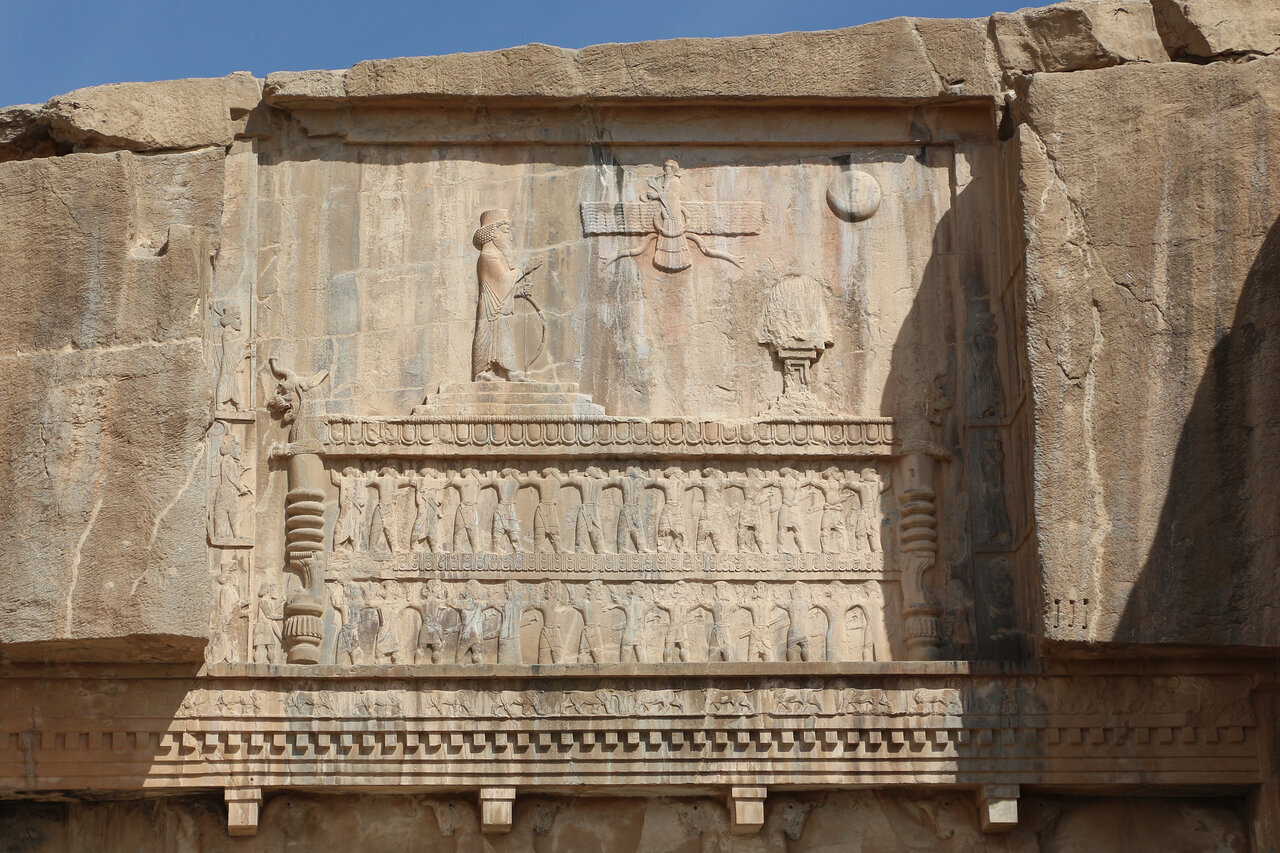Restoration work resumes on Apadana Palace and tomb of Artaxerxes III in Persepolis

TEHRAN - Restoration efforts have officially resumed at several key heritage sites within Persepolis, a famed UNESCO World Heritage site in southern Iran, following a temporary pause during the Nowruz holidays.
Among the major projects are the Apadana Palace, the rock-carved tomb of Artaxerxes III, and the southern inscription of the Terrace (Takhtgah), each representing invaluable legacies of the ancient Achaemenid Empire (c. 550 – 330 BC).
According to Shahram Rahbar, head of the Conservation and Restoration Department at Persepolis, the restoration workshops, which had been semi-active due to the high volume of Nowruz visitors from March 15 to April 4, are now fully operational.
Rahbar described the southern inscription of the Terrace, attributed to Darius the Great, as one of the most significant and technically challenging restoration projects underway.
Rahbar noted that this inscription is not only one of the earliest examples of Achaemenid royal texts but also of immense historical value due to its content. Its complexity has led to multiple technical reviews by conservation, archaeology, and structural engineering experts. A joint team was formed to develop a consensus-driven plan for the site’s restoration.
Work has also resumed on Column Base B2 in the northern portico of the Apadana Palace, one of the earliest and most important structures of the Persepolis complex. Originally built by Darius I the Great (r. 522–486 BC), the Apadana served as the main audience hall where the king received tributes from across the vast Achaemenid Empire.
The palace is notable for its intricate reliefs, especially those on the eastern and northern staircases, which depict representatives of various nations bringing gifts to the king — powerful imagery reinforcing the unity and diversity of the empire.
The rock-carved tomb of Artaxerxes III (r. 359/58–338 BC), which had previously been reported to suffer from water damage, is an essential component of Persepolis's architectural ensemble. It reflects the enduring grandeur and funerary traditions of ancient Persian kingship. The renewed focus on this monument follows concerns raised by cultural heritage advocates about its preservation.
“Despite disagreements among technical teams in the past, the current collaborative approach has yielded promising results,” Rahbar stated, expressing optimism about the ongoing work.
Persepolis, once the ceremonial capital of the Achaemenid Empire, remains a symbol of Iran’s ancient grandeur. The continuation of these restoration projects after Nowruz reflects Iran’s commitment to preserving its world-renowned heritage for future generations.
Also known as Takht-e Jamshid, the site ranks among the archaeological sites that have no equivalent, considering its unique architecture, urban planning, construction technology, and art. Majestic approaches, monumental stairways, throne and reception rooms, and dependencies have made that 13-ha ensemble one of the world’s greatest archaeological sites.
Narratives say that Persepolis was burnt by Alexander the Great in 330 BC apparently as revenge against the Persians, because it seems the Persian King Xerxes had burnt the Greek City of Athens around 150 years earlier.
AM
Leave a Comment